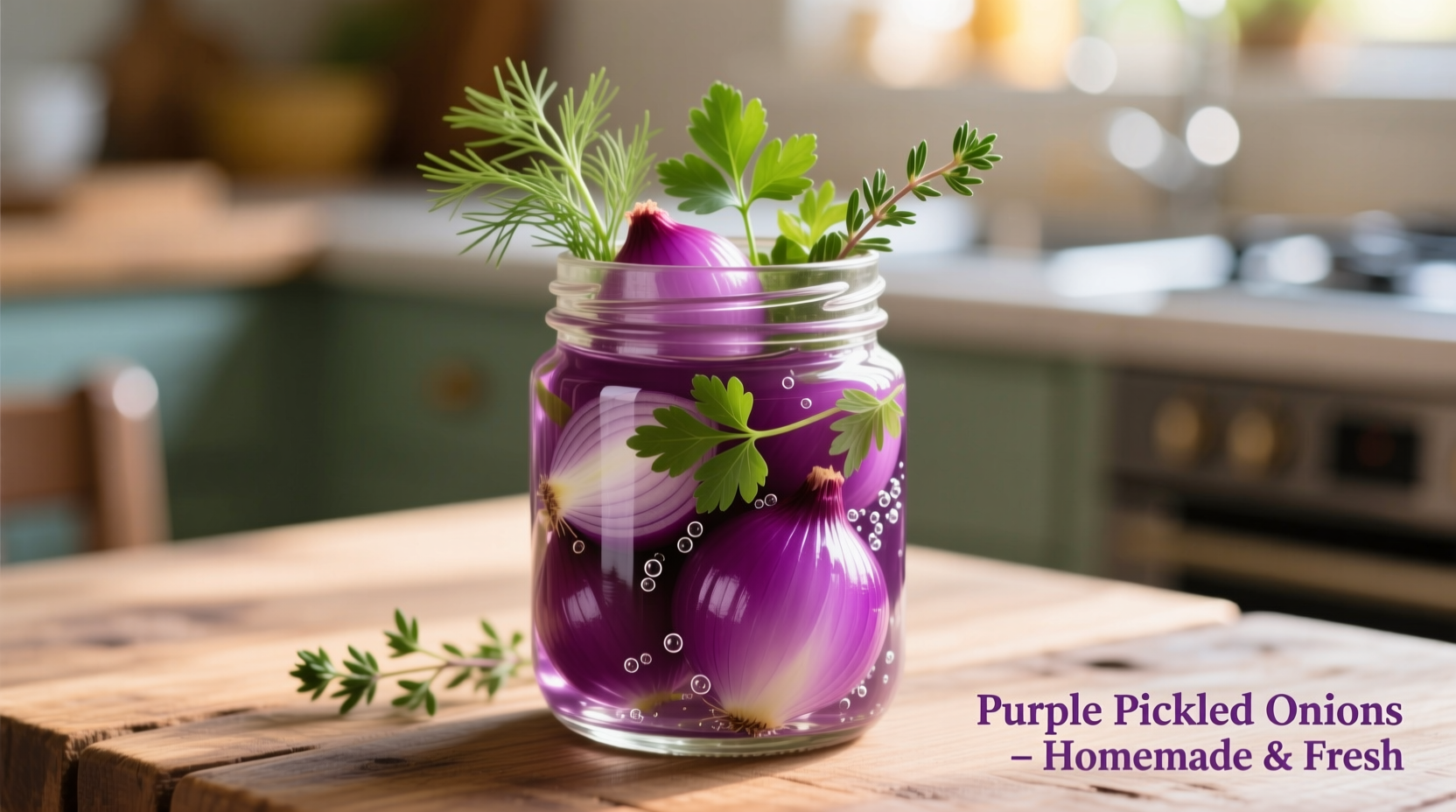Transform ordinary red onions into a kitchen superstar with this foolproof pickling method. Unlike other varieties, red onions maintain their stunning purple hue when pickled while developing a complex sweet-tangy flavor that elevates everything from tacos to salads. The magic happens through osmosis—the vinegar brine draws out harsh sulfur compounds while infusing delicate acidity.
Why Red Onions Outperform Other Varieties
Red onions contain higher natural sugar content than yellow or white varieties, creating a more balanced flavor profile when pickled. Their dense cellular structure maintains crispness longer, while anthocyanins—the pigments responsible for their purple color—react beautifully with acidic brines.
| Onion Type | Sugar Content | Pickling Time | Color Retention | Best For |
|---|---|---|---|---|
| Red Onion | 8.5% | 30 min-4 weeks | Excellent (vibrant purple) | Tacos, salads, sandwiches |
| Yellow Onion | 4.7% | 24+ hours | Poor (turns golden) | Hearty stews, roasts |
| White Onion | 5.2% | 1-2 hours | Fair (becomes translucent) | Salsas, ceviche |
The Science Behind Perfect Pickling Brine
Professional chefs like Maya Gonzalez emphasize that vinegar selection dramatically impacts final flavor. According to USDA food preservation guidelines, a 5% acidity level is essential for both safety and optimal texture. The ideal brine ratio creates an environment where beneficial bacteria thrive while preventing spoilage.
"In Oaxacan markets, I've seen generations perfect this balance," shares Gonzalez. "The traditional approach uses equal parts water and vinegar with just enough sweetener to round the edges—not mask the onion's character."
Step-by-Step Pickling Process
Prep work (5 minutes): Thinly slice 2 medium red onions (1/8-inch thickness) using a mandoline for consistent results. Separate into rings and place in a clean glass jar.
Brine creation (3 minutes): Combine 1 cup vinegar (apple cider or distilled white), 1 cup water, 2 tbsp sugar, 1 tbsp kosher salt, and optional flavor enhancers like 1 tsp coriander seeds or 2 smashed garlic cloves in a saucepan. Bring to simmer until sugar dissolves.
Infusion (critical timing):
- Quick-pickled (30-60 min): Pour hot brine over onions, cool to room temperature, then refrigerate. Ready in 30 minutes but best after 2 hours.
- Traditional (1+ weeks): Seal jar and process in boiling water bath for 10 minutes for shelf-stable preservation.

Regional Applications & Creative Uses
From Mexico City street food to Mediterranean mezze platters, pickled red onions bridge culinary traditions. In Yucatán, they're essential for pibil dishes, while Lebanese cuisine features them alongside fattoush salad. Modern chefs use them to cut through rich flavors:
- Add to fish tacos for brightness against creamy sauces
- Top avocado toast for color and acidity
- Mix into tuna or egg salad for complexity
- Garnish grain bowls to balance earthy ingredients
- Pair with sharp cheeses on charcuterie boards
Storage Guidelines & Shelf Life
Refrigerated quick-pickled onions maintain peak quality for 3-4 weeks. The USDA's National Center for Home Food Preservation confirms that properly acidified vegetables remain safe for consumption within this timeframe. Discard if you notice:
- Cloudy brine with foul odor (sign of bacterial growth)
- Mushy texture indicating enzymatic breakdown
- Mold growth on surface
For extended storage, freeze in ice cube trays then transfer to airtight containers—though texture will soften slightly upon thawing.
Troubleshooting Common Issues
Problem: Onions turn blue or green
Solution: This harmless reaction occurs when anthocyanins meet aluminum or cast iron. Use glass, ceramic, or stainless steel containers.
Problem: Mushy texture
Solution: Overexposure to heat during brine preparation breaks down cell walls. Always cool brine slightly before pouring over raw onions.
Problem: Bland flavor
Solution: Increase brine-to-onion ratio or extend pickling time. Fresh onions contain more water that dilutes initial flavor absorption.











 浙公网安备
33010002000092号
浙公网安备
33010002000092号 浙B2-20120091-4
浙B2-20120091-4